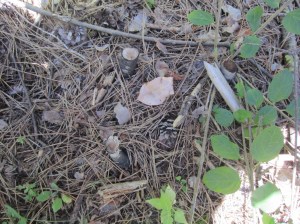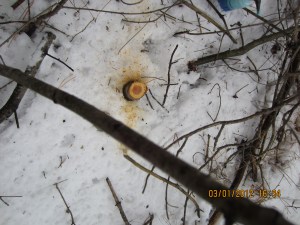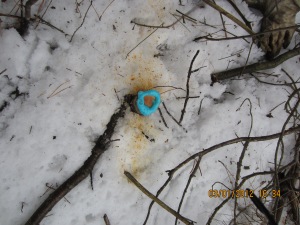Tagged: winter herbicide application
Best Time to Kill Tree that Is Invasive – Winter!
Updated: January 21, 2021

When it comes to killing woody invasive plants, winter is generally the best time. This may surprise you. Herbicide labels may confuse you because labels often say the herbicide should be used when the target weed is “actively growing.”
However, cut stump and basal bark treatments work great in winter as long as the plant has an above-ground stem with live inner tissue. Weed trees and bushes all have live inner bark. Therefore consider winter treatment for invasive woody species such as Asian bittersweet, buckthorn, honeysuckle, kudzu, privet, tree-of-heaven, etc.
There are a number of advantages to working in winter (or late fall):
- Effectiveness: The greatest success I have had controlling woody species is in late fall, winter, or very early spring (before sap starts flowing up the stem to the branches). This is true for others too. Reinartz 2002.
- Ease of Movement: The absence of growing plants makes it surprisingly easy to move through dense growth.
- Comfort: Removing invasives can be a lot of work, especially if you use hand tools. In winter, you can stay warm without being sweaty and uncomfortable.
- No Mosquitoes or Ticks: This is a godsend. If it’s above freezing and there’s no snow, ticks can be out but at very reduced numbers.
- Identification of Targets: As long as you can identify the invasive by the bark and structure of the plant, identification is much easier. Without leaves blocking your view, you can see so much better.
Caveats:
- Cold Temps: I usually do not work when it’s below about 20 degrees F. If it gets below that temperature, water-based herbicides may freeze, especially around the nozzle. Plastic containers also become more fragile.
- Deep Snow: It is difficult to do either cut stump or basal bark treatments if the snow is more than a few inches deep. You can remove snow around the base, but this can be time-consuming.
For cut stump treatments, cut the stump as close to the ground as possible (1 to 2 inches) above ground level. (I find that failed cut stump treatments often result from cutting the stump too high.) Brush off any debris on the stump face. (Dirt will neutralize herbicides such as glyphosate.) Then apply the herbicide immediately after cutting (within 5 minutes or so).
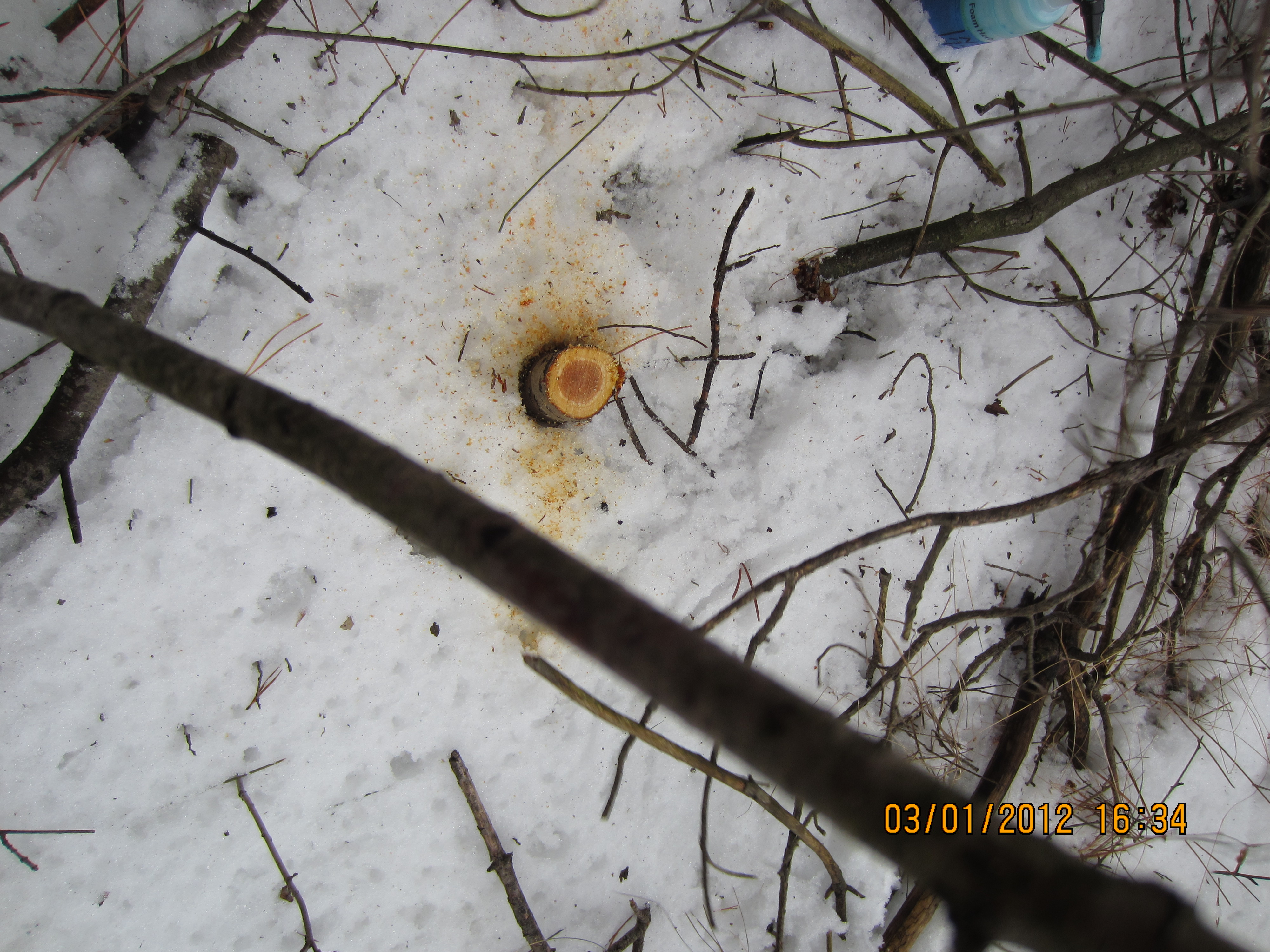
Freshly cut stump of weed tree
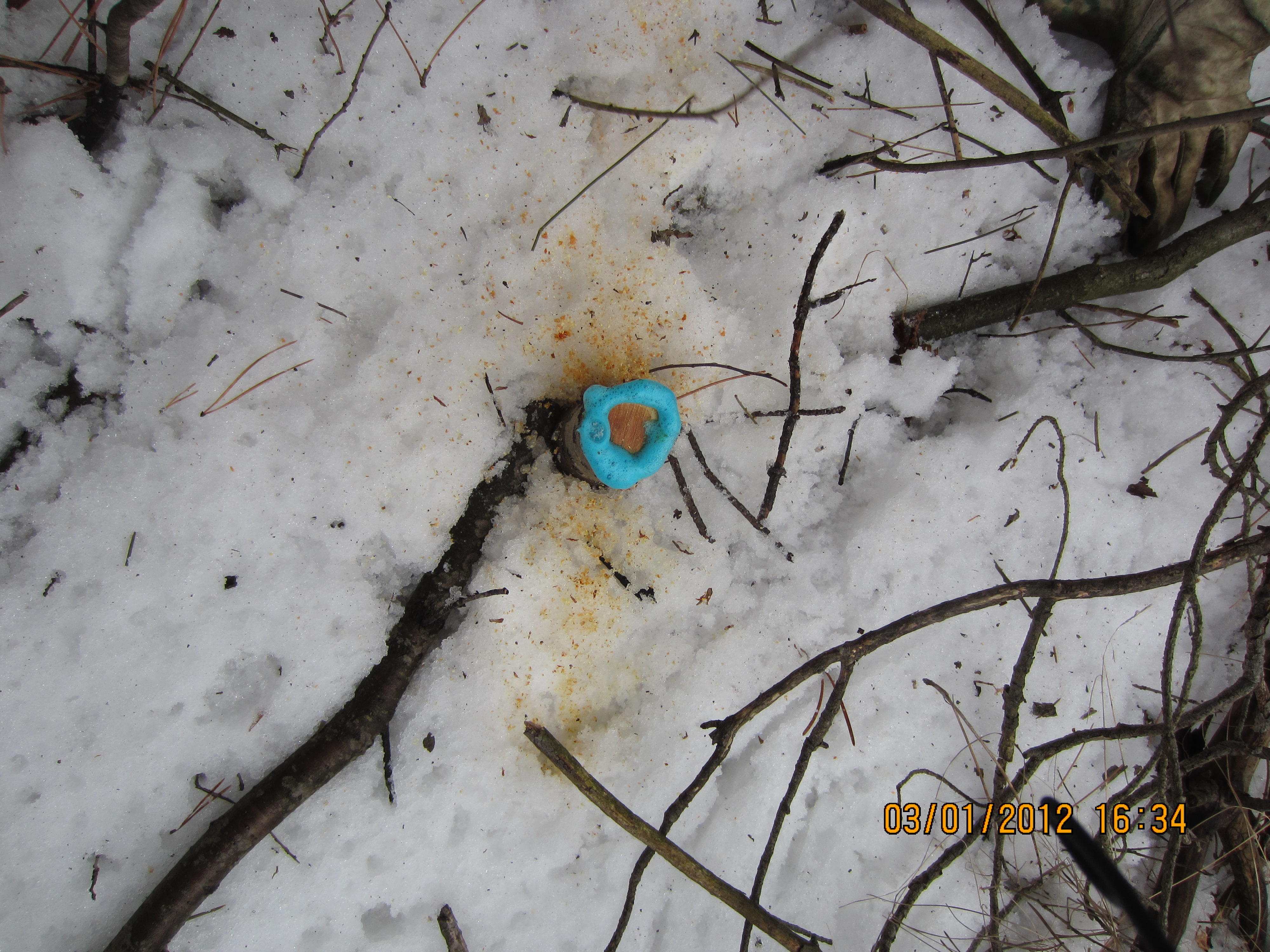
Foam herbicide applied to cut stump in winter
How late in winter can you apply? Read our other post on applying brush killer in late winter/ early spring.
Good luck! I hope you are able to get out on a nice warm winter day to remove some invasive plants. It can really be enjoyable!
Stump Killer – Use It this Winter and Get a Jump on Spring and Remove Unwanted Trees and Bushes
You have an unwanted tree growing vigorously in the wrong place – in the middle of a flower bed or in a native grass planting or next to a building foundation. You know you need to remove it. Winter is actually a great time of year to do this. Herbicides work fine in the winter if applied correctly. See Reinartz 2002.
If you simply cut the tree or bush down, you will soon get something far worse in the spring: a multi-stemmed bush like the one shown below on the right side.
There is a simple way to prevent this from happening: use the Green Shoots Foam Herbicide System to precisely apply a concentrated herbicide to the stump immediately after cutting to kill the stump. So here is what you do.
- Cut back the tree or bush – If it is a big tree or bush, I typically cut off the upper branches first and leave a tall stump anywhere from knee to shoulder height. Clear out the branches so you have room to work.
- Prepare the Foam Herbicide Dispenser according to the instructions. Be sure to read the herbicide label.
- Cut the stump close to the ground – try to cut it within 2 to 4 inches of ground level.
- Immediately apply the foam herbicide to the cambium layer of the stump. This is a thin layer of live inner bark just inside the outer bark.
The Green Shoots Foam Herbicide System has several advantages over standard herbicide sprays:
- Precision – This is critical when you are applying to the narrow ring of live inner bark less than 1/10 inch thick. With a liquid spray, the application is so imprecise – you may miss your target. At the very least, you will waste herbicide trying to hit the target.
- Less Drip – The foam herbicide sticks to the target and will slowly soak in. Liquid sprays will bead and drip off the target.
- Visibility – the foam is visible for some time after the application. This helps in identifying what part of the target you have treated.
For more information about the Green Shoots Foam Herbicide System, visit the Green Shoots website.
